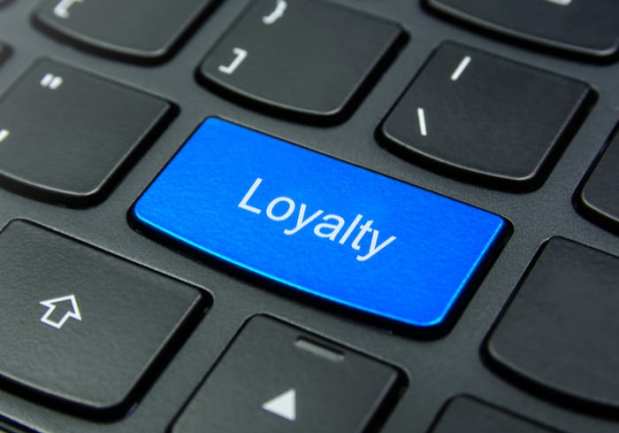Retailers Up Their Loyalty And Rewards Games

Recent days have brought new evidence of the importance of robust loyalty and rewards programs in retail – an area of ongoing innovation, and where merchants of all types can stand apart in a fiercely competitive industry.
That latest evidence comes from Chipotle Mexican Grill, which recently beat analysts’ expectations for second-quarter earnings. CEO Brian Niccol said the company’s rewards program, which rolled on March 12, “has exceeded our expectations with over five million enrolled members.” Early results indicate that members are increasing frequency after joining the program. “The rewards program gives us a currency that we can use to incent behaviors, and is a key enabler of our digital ecosystem moving forward,” Niccol added. (Through the program, diners receive 10 points for every dollar they spend and earn a free entrée when they accrue 1,250 points.)
Retail Card Programs
The push toward better loyalty and rewards power in retail is also being seen outside the world of QSR operations.
Citi, for instance, recently announced it would launch a new feature that allows qualifying cardmembers to shop and receive real-time alerts to redeem their ThankYou Points for eligible purchases. This new Pay With Points feature allows Citi Prestige, Citi Premier, Citi Rewards+ and Citi ThankYou Preferred cardmembers to redeem their ThankYou Points immediately for everyday purchases. Starting next month, ThankYou members can choose to receive push notifications after an eligible purchase – or on a real-time, daily or weekly basis – as well as set a minimum dollar amount of a purchase to get an alert.
Citi ThankYou cardmembers can also redeem their ThankYou Points for eligible purchases online, including pending transactions.
This launch follows other recent enhancements to Citi’s ThankYou Rewards Program, such as the addition of numerous Points Transfer partners, including Avianca LifeMiles and JetBlue TrueBlue, and new Shop With Points merchants, including Best Buy, Expedia and Amazon.
Another effort that underscores the importance of better loyalty and rewards programs involves Trax, a global technology company based in Singapore. The company recently acquired U.S.-based Shopkick, a rewards app that tracks customer behavior.
The move adds to Trax’s stable of retail tech. Shopkick users can earn rewards and gift cards by watching videos, browsing offers, traveling to stores or scanning items on shelves. It was not disclosed how much Trax paid for Shopkick, but the company was acquired by SK Telecom in 2014 for $200 million.
Shopkick has clients that include eBay, General Electric, Unilever and Lego, and it tracks customer usage and loyalty for those companies.
Large brands, including Coca-Cola and Nestle, use Trax’s technology to track their products on retail shelves. The company has 175 clients in 50 countries. Warburg Pincus, the largest shareholder in the company, became aware of Trax when team members kept hearing the company’s name. It was a similar experience for shareholder Boyu.
Value of Location
Meanwhile, mobile card services are working to turn location into loyalty opportunities.
In a recent interview with Karen Webster, Vaduvur Bharghavan (VB), president and CEO of Ondot Systems, noted that his firm has seen at least some embrace of mobile card services. Based on empirical data across several banks (“we do this on a periodic basis,” he told Webster), as much as 15 percent of cards may be “turned off” from those services. However, of those who do opt to use those service options, about 30 percent have set controls on transaction amounts or monthly spend.
Here’s another data point the executive offered: “By far, the highest number of the fraction of controls [used] is location-based. It’s over 70 percent.”
Since Ondot launched such location-based offerings in 2015 – which enable FIs to help consumers control each card separately, set maps where they can be used and set transaction limits – they have been the dominant set of features used, especially among safety-oriented consumers.
Increased adoption could be spurred by a proactive mindset on the part of FIs, VB said. Rather than let consumers “accidentally stumble” across the offerings, they could make mobile card services front and center right when consumers download the apps, especially in a setting where card-focused and banking apps are decoupled.
VB listed key points for extracting value in location-based services: “I want my card to ‘follow’ me so I can use it where I am. I want to get offers … where they matter, based on where I am, and based on my past purchase history. And when I see transaction details, it should be clear where I have made purchases.”
That might mean prompts that span all of the above, which might ask users if they’d like to enable location settings on their cards, with the explanation that a key benefit exists with such an opt-in – namely, as VB said, “that the card works where you are – and we’ve made sure it does not work where you are not.”
Retailers and other players continue to put loyalty and rewards front and center to entice more consumers.
